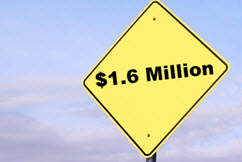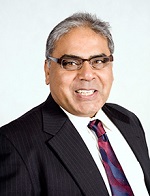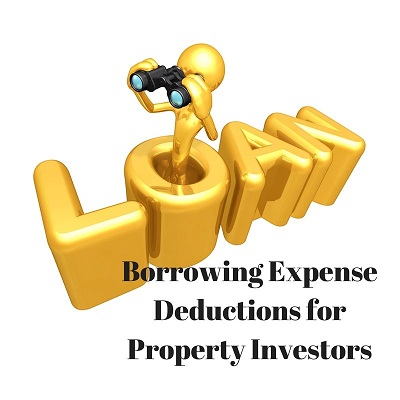|
The good, the bad and the bit I don't understand about SMSF's.
Notification of a new email in my inbox distracted my gaze out of the window at the barking neighbour's dog on a hot February day. The email was on "how to help your adult children buy property" a newsletter from Australian Financial Review (AFR) where the writer John Wasiliev answers to readers superannuation questions. Frankly I am not a fan of John's writing - even though his credentials say "a veteran writer on superannuation and has written for the AFR for more than 30 years". Fact is, that I do not read AFR for financial advice or for that matter any other media for financial decisions. In my opinion Media is influenced by various interest groups who have their own agenda and it tends to muddle up the facts to give a different meaning to truth which never gets told. This article was ranting about why you should "lend" money to your kids for a deposit for a home, for them to pay it off while they work. There are many investors who rely on rags like AFR for financial advice and in turn get conditioned - in thinking that, since the strategy is in the newspaper - it must be the "best advice" without considering their own personal financial situation. Like disruption in all facets of life, old time tested ideas of paying off your own home loan should be re-visited in current tax and investment environment. We need new thought for each age and income bracket. Newspapers are usually an extension of lobby groups or public relation firms. I remember being approached by one such marketing / public relations company some years back - they claimed that they can influence journalists in the main stream media to write favourable articles about my business. Since their principal was a prominent ex-journalist and "he knows everyone in the game" can influence some writers in how some articles should conclude. Media is well known to realign facts to influence consumer behaviour. Here is an example - ATO recently released its Self-managed super fund quarterly statistical data – June 2018. This data provides latest statistics on the self-managed super fund (SMSF) sector. This is what the media reported "Total number of SMSFs is now 596,225,. Number of members in SMSFs are now 1,118,650, estimated SMSF assets are $750 billion, the top asset types held by SMSFs, by value, are listed shares and cash and term deposits, making up 31% and 23% of total estimated SMSF assets, respectively. Listed and unlisted trusts were 15% and property was $142 billion or 19%, total of these asset classes were 88%. The average assets per SMSF member was $652,000, the average assets per SMSF was $1.2 million".
All what was reported was true, but how it concluded meant the following to the reader a) Average SMSF member balance is $652,000, hence an SMSF is only for those with large balances. b) SMSF invests only in listed shares, listed unlisted trusts and some property, hence if you are not into investing SMSF is not for you. As discussed below, the same figures look very different if you take a closer look and do some of your own analysis which the main media chooses to ignore. Recently, productivity commission on superannuation reduced their minimum figure required in superannuation to establish an SMSF to $500,000 down from $1Million. Media has been commenting on this issue for a while and writing articles which conclude in deterring would be Trustees of SMSF's, "not enough diversity with small balance" is usually their line. Continues media comments make a difference, net establishments in year ending June 2013 were 28,153, however net establishment reduced to only 14,505 in year ending June 2018.
Article continues after advertisement ADVERTISEMENT
Let us show you... How to reduce SMSF Audit time in half! Do more with less ...
Topics Technical Session: Audit of Funds with Pension members above Transfer Balance Cap Amount; Actuarial Certificate and Strategies: SMSF audit under the new regime of Contributions / Total Superannuation Balance Audit Tool: Do more with less time using an Online Audit Program Proposed Agenda 08.30 AM: Registration - Arrival Tea and Coffee 09.00 AM: Technical Session 11.00 AM: Tea/Coffee Break 11:30 AM: Introduction to Audit Online on SMSF Audit Software and Website integration 01:00 PM: Lunch and Group Discussion on Audit of funds with LRBA - Loan from related party - how repayment of Loan will be considered 02.00 PM: How to complete an audit in half the time by using online SMSF audit 04.30 PM: Seminar Closed
Introduction/Overview SMSF Auditors spend too much time in financial audit and completing manual audit working papers, our online software does most of this work automatically & saves half your time as compared to traditional auditing methods. It checks closing share prices, dividends received from ASX and all mundane tasks of signing, scanning & mailing of audit report, Mgt. letter, engagement letter, Invoice & contravention reports etc. are automated with one click of a mouse. Embrace an efficient framework for high quality audits and conduct audits on a flawless workflow Management system. Achieve peace of mind & confidence of knowing that you are using a completely up-to-date online checklist and cloud process to deliver a robust, hassle free top quality SMSF audit. Improve communication with accountants & trustees. Manage 20 or 2000 audits by streamlining workflow from our smart Audit Manager & establish seamless communication between all parties. Our online SMSF audit system is the only tool which can deliver reliability, speed and volume and ultimately profits for your business at a fraction of the cost. Benefits/learning outcomes Audit from anywhere, anytime from any device on your own website or by integrating with ours. Increase audit effectiveness, add value, reduce audit risk, drive SMSF compliance, revolutionise your business. Included in the fee is an account to audit 10 SMSF on the online platform worth $187 and Lunch. Those auditors who are already using the online software will benefit by learning new shortcuts and other advanced features of the online software. Recommended For All SMSF ASIC approved auditors. CPD Hours 2 Hours CPD in Superannuation and 4 Hours CPD on auditing SMSF's Total 6 CPD hours under self assessment method under RG 243.88 - 90 and SISA 128Q and SISR 9.04 RG 243.89 You will need to complete 120 hours of CPD over each three-year period, which must include 30 hours of development on superannuation and at least 8 hours of development on auditing SMSFs. SISR 9A.04 (3) (b) be development that could reasonably be expected to enhance an approved SMSF auditor's technical skills or professional service delivery. Attendee Requirements Attendees may bring their own Laptops / Ipads for a better understanding - although some attendees may get more from the workshop by looking at the facilitators screen
Speaker Mr Manoj Abichandani Manoj has worked in SMSF since 1988 and is SMSF Specialist (UNSW). He was providing high level advisory services to over 600 funds in his own 3 partner CPA tax practice for 19 years and has written this online software. He currently works as SMSF Technical Support Team Leader at www.trustdeed.com.au He has hands on knowledge on what happens in a tax practice on high level of SMSF practical issues.
What facts were not reported by media Let's look at what SMSF's June 18 quarterly report in detail, for starters, some facts which never get reporting are; about 33,000 funds or 5.5% of all funds have less than $50,000 in them and close to 100,000 funds or 16.4% of all funds have less than $200,000 each in them and have only $9 billion in total assets or about 6.75% of total assets.
Bulk of funds 67.6% or 403,048 funds, have assets between $200,000 to $2 million and 84% of all funds or 500,829 funds have less than $2M but together have only $339.75 billion (from the total of $750 billion) or about 45.3% of all assets. What is interesting to note that all the remaining $410.25 billion assets (from the total of $750 billion) or the remaining 54.7% of all assets are in only 95,396 funds. The maximum assets being in the $2 million to $5 million category where 75,124 funds have $230.25 billion of assets. What is more interesting is that there are 4,174 very large funds which have over $10 million in assets or more and these 4,174 funds have a total of $74.25 billion in assets. There are 20,272 funds which have more than $5 million assets each but together have a whopping 24% of all SMSF assets or $180 billion out of the total $750 billion. These 4,174 funds that have $10 Million or more each have more assets than the lowest 233,720 funds that is 39.2% of all funds which have only $57.75 billion. Estimated half the funds, say 300,000 funds have assets equal to what these rich 4,174 funds have. This means that about half of all the existing SMSFs have $250,000 of assets or less. This figure is half of what the productivity commission has recommended that all Trustees must have before setting up an SMSF. Question then arises is why do Trustees set up funds with low balances, no money to contribute in super is not one of the reasons as from those who set up new funds in June 2018 quarter, 61.1% declared more than $60,000 income in their most recently lodged individual income tax return. This means that salary sacrifice or contributions above the employers compulsory contribution is possible and intended in future years.
Why about half of existing SMSF have low balances? Like everyone, I have an opinion on low balance super funds. Firstly, people do not contribute more in super because they do not trust current and future governments will allow them to access their monies when they need it the most. Secondly, we get influenced by media a lot, we read too much and media talks about paying off the home loan, a lot. I have no idea who employs these public relation companies that influence media writers, but it seems to be working. When you pay off your home loan, it is with after tax dollars and it is very expensive. To explain this point in simple terms, if your income is between $37,000 and $90,000 your tax rate is 32.5% plus 2% medicare levy. Simple maths will tell you that if you reduce your loan by $1,000, you will have to earn $1,527 and then pay 34.5% tax or $527 and then reduce your home loan by $1,000. In other words it costs 52.7% in tax to reduce your home loan and by comparison, if that $1,000 principal amount is not paid back to the bank - it may cost you only $52.70 in interest each year if your interest rate is 5.27%. Lastly, most of financial media articles ramp about banks and their financial products, like managed funds etc and perhaps that is why 46% of all SMSF assets are invested in listed shares, listed and unlisted trusts and 23% in cash or fixed deposit. There is no reliable data available on property investments made by Australians outside of SMSFs. The point which I am trying to make here is that, there is not much written on property investments by SMSF's for income in retirement purposes, other than by property spruikers. So what are some investors doing with their money outside of super. The answer can be quite complicated & lengthy, but logically some are certainly spending it on themselves (reduced savings) or paying banks to let strangers live in their investment properties - this is also known as Negative Gearing (NG). In the recent past, "Me Too" or "Fear of Missing Out" or FOMO led to novice investors indulge in "Off The Plan" (OTP) property of the wrong type. Some OTP sales can be credited or were fuelled by frenzy media reporting - this time perhaps influenced by property spruikers public relations team. This resulted in property values growing by over 50% in some cities during the 2013 - 2018 period of madness. Some intelligent people were selling.
Is paying off your home loan a better option today? When you live in a 50% geared home, that is your loan is about half the market value of your property, in other words, you own the bedrooms and half the back and front yard and the bank owns the rest of your house. In this situation, if the street / suburb value goes up or say the value of the house goes up due to inflation or CPI - you automatically own more of your house.
To explain this concept let use a simple example: Harry and Mary who purchased a home in 2008 in Castle Hill in Sydney for $600,000 with 50% borrowed money. For the past 10 years, they have had an interest only loan. In 2018 the house is worth $1.2 Million, however they still owe to the bank $300,000.
How do we not pay back the loan amount to the bank? If the bank converts the interest only loan to a principal and interest loan, the borrower is being forced to return the loan amount. By using the same example of Harry and Mary, let us assume that they are in their 50's and still have a home loan $300,000 and if their loan becomes P & I their monthly repayments will increase. If they are middle income earners with teenage children, say earn about $75,000 each, they will be devastated with the extra burden of principal repayment, their living style will deteriorate. To solve this issue, there is a simple strategy, that is to capitalise the loan interest amount. The way this strategy works is that they need to take out a second loan, say a line of credit which will pay the principle amount of the first loan. In fact the second loan can be extended to paying interest as well for the first loan of $300,000. This means Harry and Mary can live in their own home without paying any interest or principle to the bank and will have the extra cash for salary sacrifice into super.
How can we have a high balance SMSF?
Remember that wealth is the result of high income - hence our energies and investment strategies should be to chase high returns and not capital growth. This is because future growth in asset value or change in market value is unpredictable where as choice of purchasing an asset with high income can be controlled. It can be difficult for low income earning funds to become a large fund, hence Trustees of low income funds should consider high income strategies on existing assets and try to contribute more - the maximum amount which can be contributed in super, tax deductible, is $25,000 including the compulsory 9.5% by your employer. Positive gearing in SMSF works the best as a wealth creation strategy due to lower tax rate in Super. Gearing is rarely used in SMSFs. As per the 2017 statistics show that borrowings were only $22 billion and residential property assets were $35 billion and non-residential property (where rental income can be higher than interest expense) were only $68 billion out of a total $750 Billion. By Manoj Abichandani Disclaimer: Information given above is only for educational purposes and should not be considered as financial advice. All the above strategies need careful & expert planning and professional financial, legal and accounting help and may not suit everyone. |
||||||
| click here to unsubscribe from the mailing list |
Phones are not working due to Optus outage, Please click on Live chat Button.
- $139 + ASIC FEECompany Registration
- Fr $55 + ASIC FEEBusiness Name Registration
- $148.5 (Incl. GST)SMSF
Trust Deed - Fr $165 (Incl. GST)SMSF
Tools- Reduce cost of Documents
$55.00 - Pay By Vouchers - Information
- Commence Account Based Pension
($248.5 incl. GST) - Deed of Confirmation
($248.5 incl. GST) - Add Member to SMSF
($248.5 incl. GST) - Delete Member from SMSF
($248.5 incl. GST) - Change Individual Trustee to Corporate
($248.5 incl. GST) - Change Corporate Trustee to Individuals
($248.5 incl. GST) - Change Corporate Trustee
($248.5 incl. GST) - Declaration of Trust
($220 incl. GST) - SMSF Loan Agreement
($220 incl. GST) - Binding Death Nomination
($75 incl. GST)
- Reduce cost of Documents
- $165 (Incl. GST)SMSF
Borrowing - $97.50 (Incl. GST)Actuarial
Certificate - $495 (Incl. GST)Quantity
Surveyor Rep - Fr $125 (Incl. GST)Trusts
- Reduce cost of Documents
$55.00 - Pay By Vouchers - Information
- Discretionary Trust Deed
($148.5 incl. GST)
($250 incl. GST with Company Trustee) - How Discretionary Trusts work
- Unit Trust Deed
($148.5 incl. GST)
($250 incl. GST with Company Trustee) - How Unit Trusts work
- Fixed Unit Trust Deed
($275 incl. GST)
($372.5 incl. GST with Company Trustee) - How Fixed Unit Trusts work
- Why Use Us
- Document Printing
- Reduce cost of Documents
- FreeJobs
- Our
Fees
-
Register a Company or Business Name 24/7,
we have a direct link with ASICHelping you to set up the right business structure online
Fast, Simple and Easy application like never before
Register Now -
Full technical support for Family or Discretionary Trust,
Unit Trust and Fixed Unit TrustFully online, legally compliant trust deed instantly delivered to your inbox
One stop solution for your trust structure needs
Register Now -
Simplify SMSF management & updates
with dedicated SMSF SpecialistCreate the most technically robust
Self Managed Super Fund trust deed, online in less than 20 minutesMake changes easily for smoother running of your SMSF by using our SMSF tools
Register Now -
Get Trusted & Accurate SMSF Borrowing documents
and Actuarial Certificates onlineGet your borrowing documents ready with SMSF Experts
specialised in Limited Recourse BorrowingOrder instant Actuarial certificates online to meet your actuarial certificate requirements
Register Now -
Order a Quantity Surveyor Report online
for your investment property anywhere in AustraliaPhysical visit. No online spreadsheet
Claim maximum for your Investment Property
Register Now



.png)




 Remember by paying back the home loan you are not purchasing another or a new growth asset - you are simply owning more of the same asset.
Remember by paying back the home loan you are not purchasing another or a new growth asset - you are simply owning more of the same asset. High balance SMSF's are mostly due to high contributions by members and high incomes earned by the fund from assets of the fund.
High balance SMSF's are mostly due to high contributions by members and high incomes earned by the fund from assets of the fund.